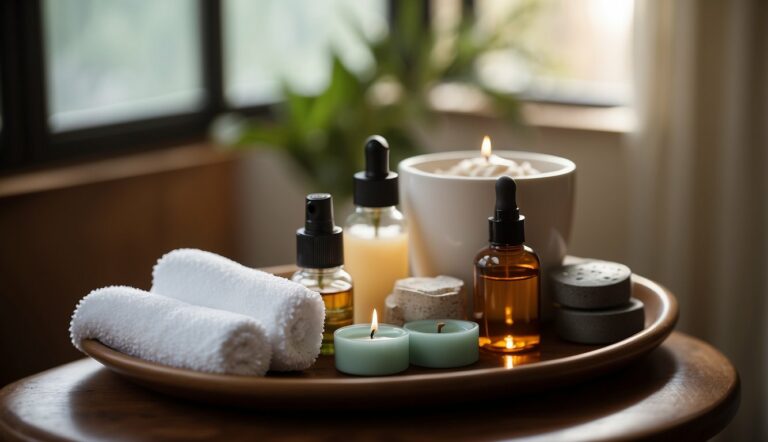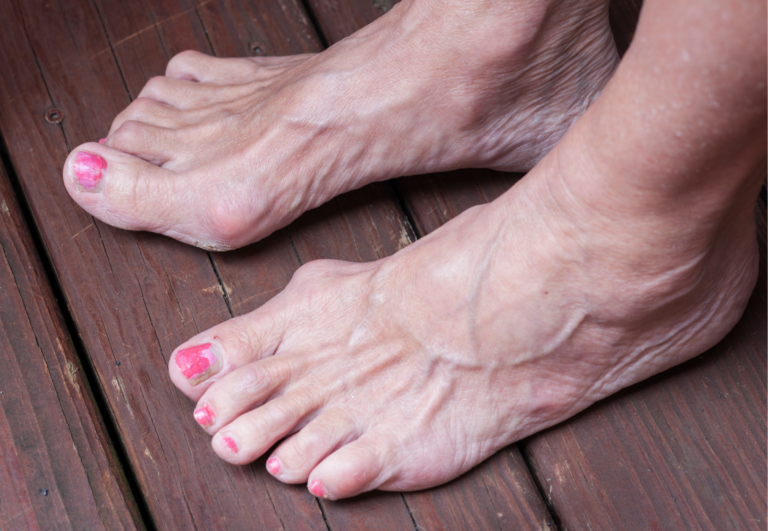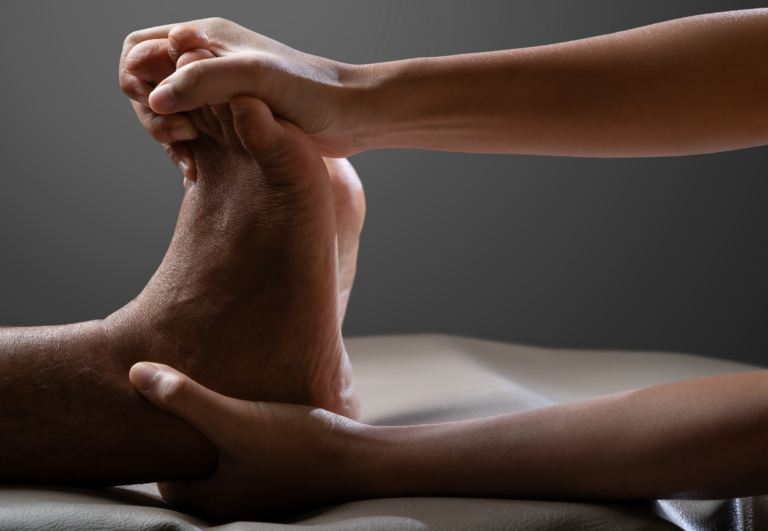Toe Spacers for Athletes: How to Use Them for Enhanced Performance
Toe spacers have gained attention in the athletic community for their potential to improve foot health and performance. As a toe spacer enthusiast, I’ve seen firsthand how these simple tools can aid female athletes seeking to enhance balance, strength, and alleviate foot pain. The use of toe spacers like Correct Toes® has shown promising results, warranting further investigation for their wider application in sports.
Athletes looking for immediate effects on dynamic balance and ankle range of motion might consider trying toe separators during their training sessions. In my experience, introducing toe spacers gradually during warm-ups can make the transition smoother and can be a viable conservative care option for managing lesser metatarsophalangeal joint (MPJ) instability.
When it comes to implementing toe spacers, the key is consistency and proper fit. Especially for athletes with overuse foot injuries, toe spacers can play a significant role in rehabilitation. Integrating toe separators into daily routines, both in and out of their athletic footwear, can support a proper toe alignment and contribute to improved athletic performance.
Toe Spacers and Their Benefits
Toe spacers are designed to realign and support the natural positioning of toes, enhancing comfort and athletic performance by improving balance and circulation.
Key Features of Toe Spacers
- Material: Typically made from silicone or gel for durability and flexibility.
- Fit: Snug yet comfortable fit between toes to maintain proper alignment without restricting movement.
Health Advantages for Athletes
- Improved Blood Flow: Encourages better circulation, which can contribute to enhanced foot health.
- Balanced Foot Structure: Supports the natural spread of toes, potentially reducing risk of injuries related to foot alignment.
In my experience as a toe spacer aficionado, I’ve noticed that using toe spacers during my training has helped maintain the comfort of my feet through rigorous workouts. The benefits I’ve found align with studies suggesting that toe spacers can indeed improve dynamic balance and ankle range of motion. They appear to be a simple yet effective tool to support overall foot health in athletes like myself.
Proper Usage of Toe Spacers for Enhanced Performance
Integrating toe spacers into your athletic regimen can be a game-changer for enhancing performance and stability. They can help in mobilizing the toes, which in turn contributes to overall foot strength.
Application Technique
Before slipping a toe separator onto your foot, ensure your toes and the separator are clean to prevent any skin irritation. Silicone toe spacers are preferred as they are soft, flexible, and can be comfortably worn for longer durations. Start by gently stretching the separator and placing your big toe into the loop, followed by the other toes. Adjust to ensure it fits snugly, but not too tight as to cut off circulation.
Integration into Training Routines
For the athletes, particularly runners, integrating toe spreaders into your routine shouldn’t be a sudden shift, but rather a gradual process. Begin by wearing them for short periods during warm-ups to acclimate your feet to the sensation. As you progress, incorporate them into your cooldown routines to aid in recovery and improve toe mobility. Be aware of how they affect your stability and make adjustments to your workouts accordingly.
Silicon toe spacers are durable and can be used during strength training sessions to reinforce proper foot alignment and muscular balance. Remember, the objective is to enhance athletic performance through improved foot mechanics.
Selecting the Right Toe Spacers
When choosing toe spacers for athletic use, athletes should focus on materials, design, and fitting to ensure comfort and effectiveness. These elements are critical for enhancing performance and preventing injuries.
Materials and Design
Toe spacers are typically made from materials like foam, medical-grade gel, or silicone, each having unique benefits. Foam toe spacers are soft and lightweight, often preferred for their comfort during long periods of use.
Gel toe spacers, on the other hand, can provide more cushioning and adapt better to the shape of the foot. Silicone toe spacers are durable and maintain their shape well, making them a good choice for athletes who require a long-lasting option. The design should allow for ample room in the toe boxes of your footwear, facilitating natural toe spread without constriction.
Sizing and Fit Considerations
The correct size of toe spacers is crucial for maximizing benefits. They should fit snugly, but not so tight that they cut off circulation or cause discomfort.
Athletes with a wide toe box in their shoes might prefer thicker spacers that can fill the extra space and provide better alignment. It’s essential to measure your feet and try on different sizes to find the best fit. The toe spacer should align with each toe and not cause any pressure points.
| Material | Benefits | Best for |
|---|---|---|
| Foam | Soft, lightweight | Long training sessions |
| Medical-grade gel | Cushioning, adapts to foot shape | Athletes seeking extra comfort |
| Silicone | Durable, maintains shape | High-impact sports and long-term use |
By carefully selecting toe spacers based on these considerations, athletes can improve their balance, strength, and reduce foot pain.
Addressing Common Foot Ailments with Toe Spacers
Toe spacers are simple yet effective tools that I find helpful in addressing and potentially alleviating discomfort associated with common foot ailments. They’re designed to realign toes to their natural position, which can reduce pain and prevent further injuries.
Bunions and Hallux Valgus
Bunions and hallux valgus often result from unnatural toe positions causing joint inflammation and foot pain. Toe spacers can be beneficial here. By gently separating the big toe from the others, they promote a more natural toe splay, which in turn can relieve the pressure on the bunion. Consistent use may help straighten the toe alignment, mitigating the progression of the bunion and associated pain.
Key benefits include:
- Reduction in inflammation and discomfort: By aiding proper toe alignment, toe spacers lessen the stress on the MTP (Metatarsophalangeal) joint.
- Prevent further deterioration: Keeping the big toe in its natural position can halt the worsening of hallux valgus.
Hammertoes and Overlapping Toes
Hammertoes and overlapping toes are often due to cramped footwear and high arches, leading to pain and the formation of corns or calluses. In my experience, toe spacers help straighten and separate the toes, which can increase comfort and alleviate existing foot pain.
Useful actions with toe spacers:
- Separate toes: Regular use helps maintain proper toe alignment and reduces the risk of blisters, corns, and calluses.
- Alleviate pain: Proper toe placement relieves pressure, which can diminish foot pain often associated with hammertoes and overlapping toes.
By addressing these common foot ailments with toe spacers, many athletes can find relief and continue to engage in their sports activities with reduced discomfort.
Advanced Techniques and Considerations for Athletes
As an experienced user of toe spacers, I’m here to share some advanced strategies for athletes looking to improve foot strength and function. Proper use and integration of toe spacers can enhance performance, especially in disciplines demanding strong and agile feet.
Incorporating Exercises for Toe Strength
To maximize the benefits of toe spacers, it’s crucial to combine their use with specific exercises aimed at fortifying foot muscles.
Routine exercises like toe curls, splay stretches, and marble pickups can significantly boost toe strength. Consistently incorporating these exercises into your routine can be beneficial for activities such as running and lifting, where robust toe and foot muscles play a substantial role.
- Toe Curls: Grasp a towel or small object with your toes and release.
- Splay Stretches: Spread your toes apart as far as possible, hold, and relax.
- Marble Pickups: Pick up marbles or small objects with your toes to enhance dexterity.
Aligning Toe Spacers with Other Footwear
Choosing the right footwear is crucial when regularly using toe spacers. Ensure your shoes have sufficient room to accommodate them without causing crowding.
For athletes, this often means selecting minimalist footwear or barefoot shoes, which mimic the natural shape of the feet and provide ample space for the toes.
- Footwear Tips:
- Ample Toe Box: Opt for shoes with a wide toe box to prevent foot injuries.
- Flat Soles: Look for flat soles to support natural foot arches and avoid tight shoes.
- Flexible Material: Choose materials that allow for natural foot movements during lifting or running.
These considerations will help ensure that your toe spacers work in tandem with your shoes to support foot strength and prevent issues related to improperly fitting footwear. Take care to listen to your body and adjust your toe spacer use, exercises, and footwear based on personal comfort and foot structure.
Maintenance, Hygiene, and Product Longevity
Proper maintenance ensures the cleanliness, durability, and effectiveness of your toe spacers. As someone who regularly uses these products, I’ve learned that attention to hygiene can extend the lifespan of toe spacers significantly.
Cleaning and Caring for Toe Spacers
To keep your toe spacers in top condition, regular cleaning is essential. For silicone toe spacers, like Correct Toes, a gentle soap and warm water are usually sufficient. Silicone is easy to clean and inherently more resistant to bacteria.
After washing, let them air dry completely before the next use. For those sold in multipacks, rotate through the set to allow ample drying time and maintain hygiene.
- Cleaning Process for Silicone Toe Spacers:
- Rinse under warm water.
- Apply a small amount of gentle soap.
- Massage the soap onto each spacer.
- Rinse thoroughly.
- Dry with a clean towel or air dry.
When to Replace Your Toe Spacers
While silicone toe spacers are quite durable, examine them regularly for signs of wear and tear. If they begin to lose their shape, become sticky, or show small tears, it’s time for them to be replaced. As part of a routine, check your spacers every month.
This helps to avoid discomfort and maintains the integrity of the product for optimal foot alignment. A typical 4-pack of toe spacers should allow you to have a fresh set readily available whenever needed.
- Replacement Checklist:
- Shape deformation
- Stickiness
- Visible tears
- Reduced elasticity
By adhering to these guidelines, I keep my toe spacers clean and functional, thereby ensuring that my feet remain supported during athletic activities.





